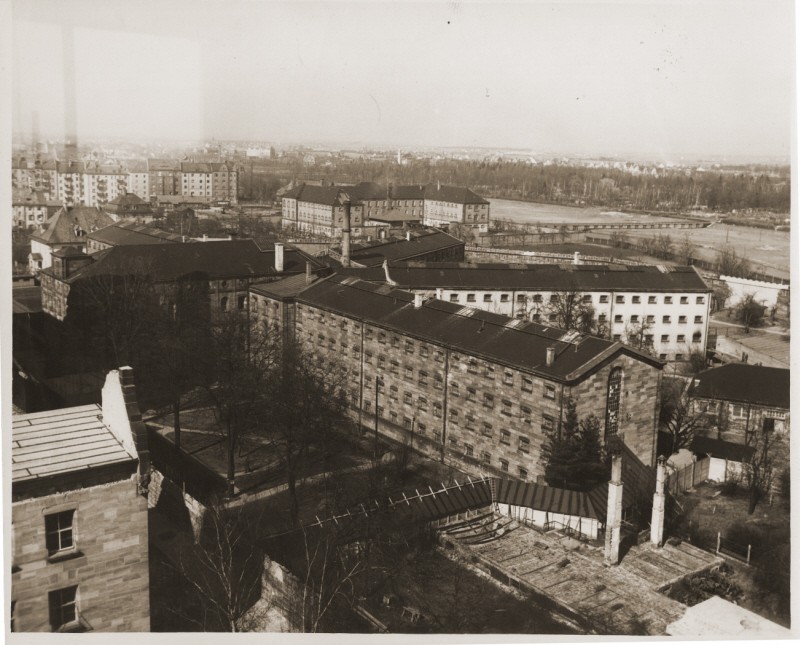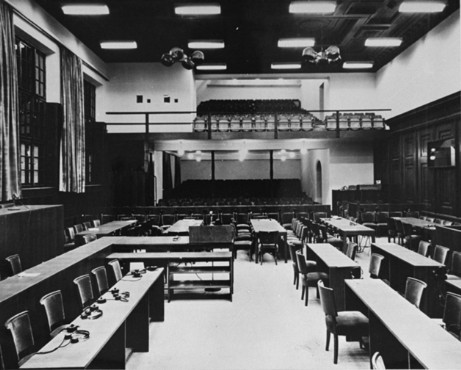
Building the Courtroom, Building the Case
In the 1920s and 1930s, the German city of Nuremberg was host to massive and lavish rallies for the Nazi Party. At the end of World War II, more than three-quarters of the city of Nuremberg, Germany, lay in rubble. The Palace of Justice was selected by the Allied powers as the location for the International Military Tribunal (IMT) because it was the only undamaged facility extensive enough to accommodate a major trial. The site contained 20 courtrooms and a prison capable of holding 1,200 prisoners.

Major General I.T. Nikitchenko, the head of the Soviet delegation who later served as the Soviet judge during the IMT, agreed to this location with the provision that Berlin be the formal seat of the tribunal. US Supreme Court Justice Robert H. Jackson, head of the American delegation and chief of counsel for the United States during the IMT, agreed. Jackson, however, expected Berlin to be merely symbolic, with the bulk of the trial to be held in Nuremberg. On October 18, 1945, the tribunal's first official session took place in Berlin where prosecutors delivered the indictments. The court then adjourned to Nuremberg where the opening session was held on November 20.
To accommodate the needs of this special trial, the main courtroom at the Palace of Justice was doubled in size as a wall was knocked down and the ceiling raised. A visitors' gallery was constructed along with a gallery to hold 250 members of the international press. Also integral to the trial was the installation of equipment, wiring, and cabling for a simultaneous translation system.

Critical Thinking Questions
- How did national histories, agendas, and priorities affect the effort to try war criminals after the war?
- Beyond the verdicts, what impact can trials have?
- How were various professions involved in implementing Nazi policies and ideology? What lessons can be considered for contemporary professionals?
- The International Military Tribunal at Nuremberg is among the best known postwar trials. Investigate trials conducted by other countries after the Holocaust.

